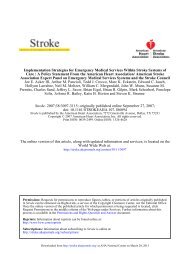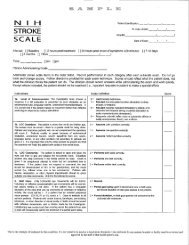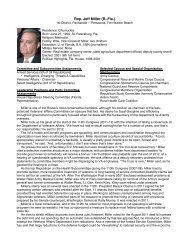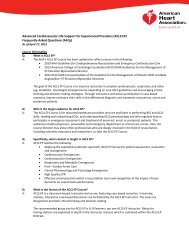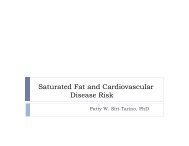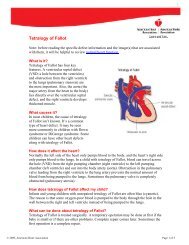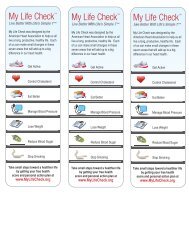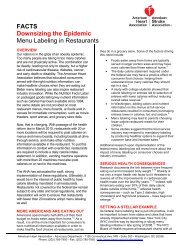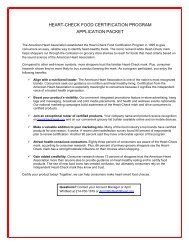Introduction to Congenital Heart Defects - American Heart Association
Introduction to Congenital Heart Defects - American Heart Association
Introduction to Congenital Heart Defects - American Heart Association
You also want an ePaper? Increase the reach of your titles
YUMPU automatically turns print PDFs into web optimized ePapers that Google loves.
Incidence of congenital heart defects<br />
Most people are unaware that up <strong>to</strong> 1.3 million <strong>American</strong> alive <strong>to</strong>day have some form of<br />
congenital heart defect and about one-half of these individuals are less than 25 years of age.<br />
At least nine of every 1,000 infants born a year have a heart defect. That’s almost one percent<br />
of live-born infants. Sometimes the defect is so mild that there are no outward symp<strong>to</strong>ms. In<br />
other cases, it’s so severe that the newborn becomes ill soon after birth. In still other cases,<br />
signs and symp<strong>to</strong>ms occur only in later childhood.<br />
In the United States, about 36,000 children are born with a heart defect each year. Most of<br />
these children can be helped by surgery even if the defect is severe.<br />
How congenital heart defects develop<br />
You may wonder why your child has a congenital heart defect. <strong>Congenital</strong> heart defects do not<br />
occur in a majority of children, and when they do occur, often there is no known cause. Because<br />
of this, in most cases there is nothing the parents could have done differently <strong>to</strong> prevent the<br />
heart defect. <strong>Congenital</strong> heart defects strike without regard <strong>to</strong> socio-economic status, race or<br />
cultural background. Don’t feel it’s your fault that your child has this problem.<br />
<strong>Heart</strong> defects, especially those occurring as isolated problems in otherwise healthy infants,<br />
generally don’t have readily identifiable genetic or environmental causes. Some error occurs<br />
early in the formation and growth of the heart when the fetus is developing that causes the<br />
defect.<br />
Several genetic syndromes (such as Down, DiGeorge, Williams, Alagille, and Noonan<br />
syndromes) have cardiac malformations as well as defects in other organ systems. In some<br />
cases, a gene defect has been identified that causes the syndrome. For instance, in Down<br />
syndrome there is an extra chromosome 21 in each cell of the body (trisomy 21). In other<br />
syndromes, a genetic cause has not yet been established. These facts all point <strong>to</strong> a genetic<br />
component <strong>to</strong> the occurrence of congenital heart defects.<br />
Numerous maternal environmental exposures early in pregnancy are also associated with<br />
congenital heart defects. These include the use of some medications for seizures, acne or<br />
bipolar psychiatric disorder, or having rubella (German measles), other viral diseases, or<br />
maternal conditions such as phenylke<strong>to</strong>nuria and diabetes. Alcohol abuse and street drugs, as<br />
well as exposure <strong>to</strong> certain chemicals, have also been associated with heart defects, <strong>to</strong>o.<br />
Depending on the defect, the chances of a sibling also being born with the same or another<br />
heart defect are about 2 <strong>to</strong> 3 percent. While this is higher than the general population rate of<br />
about 1 percent, it’s still a relatively small chance. Although exact causes for most congenital<br />
defect aren’t known, remaining healthy and avoiding certain exposures may be helpful. If you or<br />
your partner does become pregnant again, tell your obstetrician about your other child. Fetal<br />
echocardiograms (ultrasounds) may help detect problems as early as mid-pregnancy.<br />
© 2010, <strong>American</strong> <strong>Heart</strong> <strong>Association</strong>



